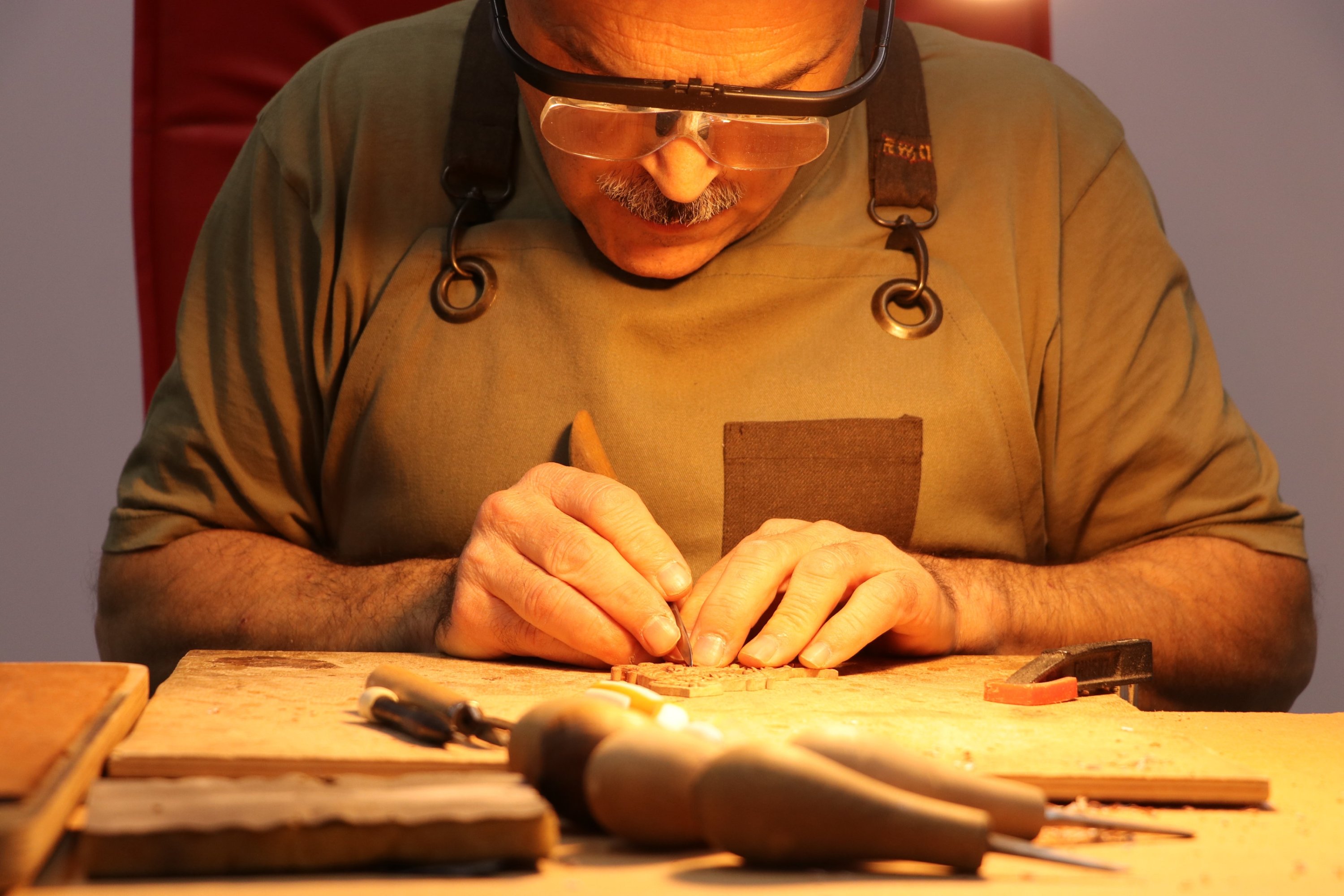© Turkuvaz Haberleşme ve Yayıncılık 2024
Pertev Aslan, a 61-year-old from Tekirdağ, has turned his passion for the traditional Turkish art of hatayi into a lifelong pursuit. This ornamental art, often seen in tezhip (illumination), çini (ceramics) and textiles, caught Aslan’s attention years ago. Since then, he has dedicated himself to carving it into wood. What began as a hobby during the COVID-19 pandemic has since blossomed into a full-fledged passion, prompting him to leave his long career as a chef and devote himself entirely to his art.
For six years, Aslan studied hatayi motifs under the guidance of master inlay artist Enis Türk. Aslan’s love for the craft flourished and he eventually opened workshops in both Istanbul and Tekirdağ to share this unique art with others, particularly younger generations. His goal is to ensure that the intricate patterns and cultural significance of hatayi are passed down to the next generation.

In an interview, Aslan explained that his work is deeply personal. "Once I touched wood, I couldn’t stop," he said. He creates detailed portraits of well-known figures such as Mustafa Kemal Atatürk, Neşet Ertaş and Aşık Veysel, carving them into the wood in a way that highlights the depth and intricacy of hatayi. Aslan's pieces can take anywhere from one to six months to complete, depending on their size and complexity.
A key element of Aslan’s work is his commitment to using natural materials. He avoids using paint, opting instead to rely on the natural colors and textures of the wood. "The woods I use must be hard and dense, like boxwood, walnut, carob and olive wood," Aslan explains. "I want my work to remain as natural as possible, with no artificial colors." His dedication to authenticity has become a hallmark of his art.

Aslan is also exploring new ways to incorporate hatayi into musical instruments, further expanding the boundaries of this traditional art form. He is passionate about teaching others, especially young people, about the beauty and complexity of hatayi. "It’s not an easy art," he says. "But I want to make it more widespread and ensure that it’s passed on. By transferring it to wood, it can endure for centuries."
Throughout his career, Aslan has developed his own unique style, moving beyond the traditional two-dimensional use of hatayi seen in Ottoman tombstones and doors. He has embraced a three-dimensional approach, adding depth and innovation to the craft while still respecting its origins.
